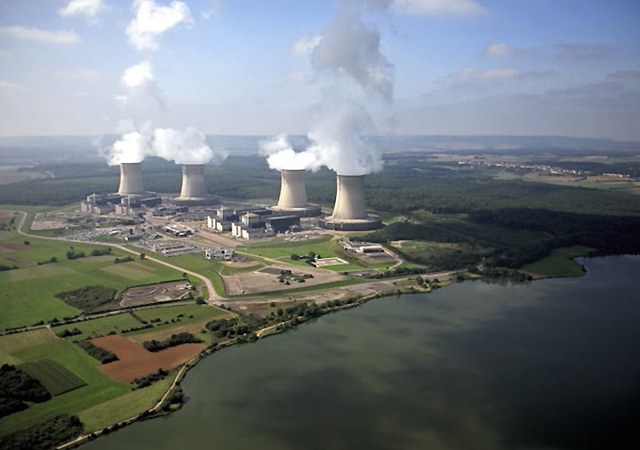
A House of Lords committee is alarmed at the degree of “uncertainty, complacency and inertia” about how affordable supplies of secure and low carbon energy will be provided across the EU in the foreseeable future.
So not just the UK where confusion reigns but the entire European Union, it seems.
While the US economy is storming ahead, fuelled by cheap shale gas and a reducing oil imports bill due to unexpectedly high shale oil production, the ability of European industries to compete on the international stage is being strangled by various factors including expensive energy at a time of economic hardship.
And the ability of EU member states to provide affordable energy is threatened by:
- The imminent closure of large numbers of coal-fired power stations, not just in the UK but across the wider EU, due to environmental rules;
- The need for sustained and deeper cuts in greenhouse gas emissions;
- The continued reliance on imports for the supply of over 50% of the EU’s energy;
- Price volatility;
- Poor interconnection between many EU member countries;
- Failure of governments across the Union to boost public acceptance of new energy infrastructure.
The House of Lords’ European Union Committee warns that it is “far from clear” as to where the required investment . . . an estimated 1trillion euros over the period 2010-2020 . . . will come from.
Eroded market values of utility companies coupled with the sheer scale of what is required and the lack of a clear overarching energy policy and a lack of individual focus and understanding by many EU member states as to the criticality of proper energy policy mean that the private sector cannot come up with the money.
Such companies have in the past generally funded the cost of new power generation plant off their balance sheet. It’s therefore not just a UK problem.
Public money for energy infrastructure investment and for low carbon energy innovation is insufficient.
Their Lordships record that institutional investors hold 13.8trillion euros of energy-related assets. But, in order to invest in energy projects, even at a time of historically low interest rates, they need confidence in policy.
That is why getting agreement on a 2030 policy framework, by 2015, must be a priority for the EU. That’s less than two years away.
They warn that, without that clarity and investment, the EU will be uncompetitive and over-dependent on elsewhere to meet its energy needs, and it will fail to seize an opportunity to make a material and enduring contribution to European economic recovery.
But surely they mean that Europe will remain uncompetitive and over-dependent on energy imports. There is nothing new about this and the situation is about to get worse, it seems.
They say the prize is immense, if it can be grasped. To quote from their report No Country is an Energy Island: “The required EU energy transformation could stabilise consumer and retail bills.
“But such stabilisation will require investment, a clear policy framework and support for innovation into both lower carbon technologies, including carbon capture and storage (CCS), and ways in which energy can be saved.
“No country is an energy island. There are therefore clear benefits to be derived from working within the EU on the energy challenge.”
Naturally, it is for each member state to decide what mix of energy is the most appropriate for them. However, their Lordships say that the European Commission should have a role in monitoring choices and their impacts.
They say that there are specific aspects of energy policy where a more coordinated EU strategy would be helpful.
These include:
- Agreement on an energy policy framework through to 2030;
- A revised EU Emissions Trading System (ETS) with a floor price, accompanied by a tighter cap on the number of allowances, a 2030 renewable energy target and, possibly, an energy efficiency or consumption target;
- Coordinated research and development (R&D);
- Increased physical interconnection between member states, which will require authorities to be clear with the public that certain choices, including “not in my back yard”, come at a cost;
- Reduction of regulatory obstacles towards the completion of the EU internal energy market.
Let’s focus for a moment on R&D . . . in a word, innovation.
Innovation is said to be central to the EU’s future competitiveness, but their Lordships reckon that Europe risks being eclipsed by others, including the US and China.
They claim there are two main factors that could undermine energy innovation in Europe, that is, inadequacy of finance; and uncertainty about the future policy framework.
They are of course right, especially in Britain’s case. We brag about being energy technology innovators, which to an extent is true, but then too often we squander it at the commercialisation phase.
We barely have a toehold in wind technology and we are, it seems, throwing away our apparent lead in wave and tidal to Germany, Norway, France and others. For evidence of this see page ????
The committee says that the finance and policy framework issues “could be addressed by an adequate 2030 framework”, particularly if this included a reformed ETS (emissions trading scheme) . . . the current one is a failure . . . which made direct links to innovation through the use of carbon revenues and greater certainty over long-term price trends.
I can’t see that working here in Britain. The City of London remains an opaque cesspit of self-interest and, even if the ETS is reformed. As for carbon revenues, I can’t see the British Treasury making the kind of concessions needed to genuinely foster innovation and commercialisation of the technologies and systems required.
As for long-term pricing trends, the only certainty for the EU is that this will be upwards. Nothing short of an absolute revolution such as the US shale gas bonanza is going to change that. I can’t see it any other way.
Recommended for you
